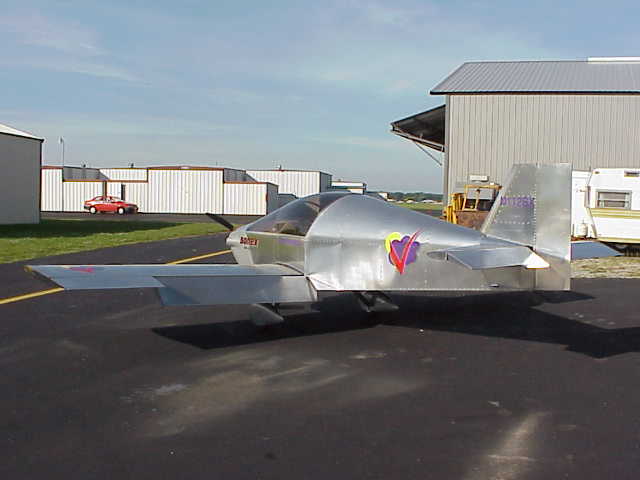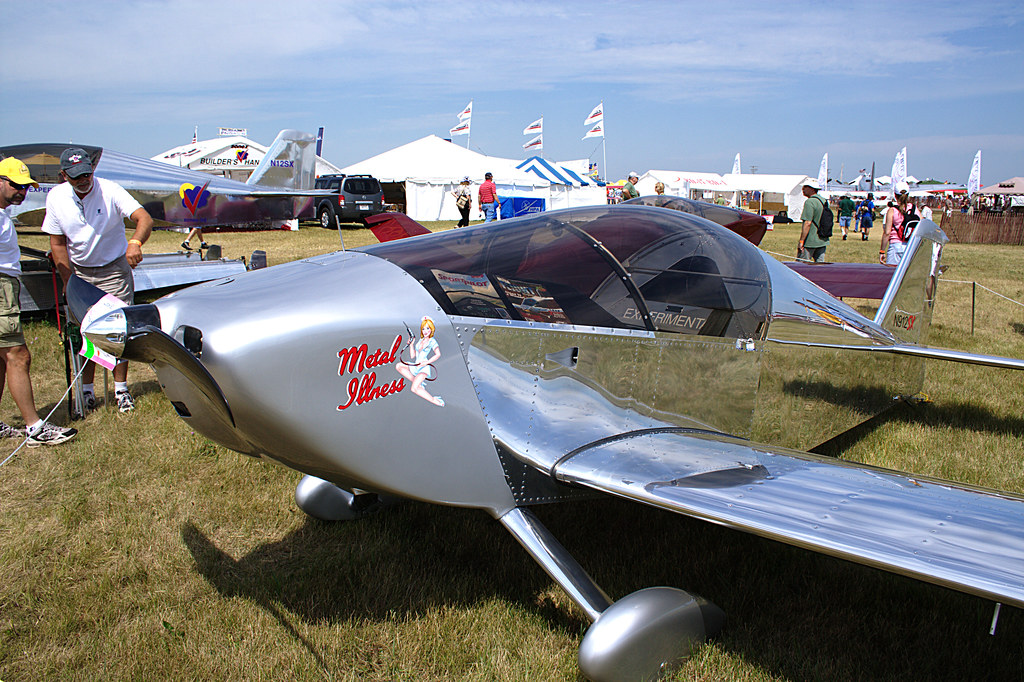I've been struggling with what finish I want on my Sonex when finished. The two possibilities are to paint the airframe or to polish it. How paint works is obvious; like an automobile, you spray on primer and paint in whatever color or combination of colors you choose. Maintenance is pretty easy, consisting of periodic washing and waxing.
The downside is that paint is heavy. You wouldn't think so, but a Sonex airplane that is painted generally weighs 25 to 30 pounds more than one without paint. That weight translates directly into reduced useful load for the airplane, which means 25-30lb less fuel, baggage or people can be carried. That becomes critical when your 300lb friend wants a ride in your airplane. There are other ways to reduce weight on a Sonex, but none are more dramatic than choosing to polish instead of paint the airplane.
So what does polishing entail? Well, there is a product called Nuvite that is a polish specifically for aircraft aluminum. Various grades from coarse (grade F9) to fine (grade S) are used with an electric buffer to bring the metal from a rough manufactured look to a mirror-like reflective shine. Here is a Sonex with an bare metal finish:
And here's one that has a high grade polish job:
As you can see, there is a huge difference! The polish really makes a plane look "finished" to me...bare unpolished metal just looks raw and uncompleted.
Many people bemoan the amount of work and especially unkeep a polished plane takes to keep that mirror shine. I was worried about that as well...after all, I want to spend my time flying, not inside a hangar buffing! I have talked to several owners of polished planes, and the comments are very uniform. Yes, it's a lot of work up front to get that shine from raw metal parts. However, once polished it usually only takes one good polish annually with the finest grade of Nuvite to keep the plane looking good (assuming you wipe the bugs and grime off after every flight as you should with any plane, painted or polished).
So with that, polishing starts to look pretty good. No doubt you'd now say "you haven't even started building yet, why are you even worried about this now?" I'm glad you asked. If you polish a plane, the easiest way to do it is before you put it together. If you can build the rudder, polish it, and then store it until assembly, you don't have to worry about it later, and it's ready to go. That way you break up a tedious polishing chore that will take many hours into smaller, less boring chunks.
My plan right now (subject to change without notice) is to polish the parts as I go, and paint the fiberglass parts (engine cowling, wing tips, tail tips, and wheel pants) a bright color, maybe yellow or orange. I've also thought about trying to make a polished and yellow/black homage scheme to one of my other favorite polished airplanes, the North American F-86 Sabre from the Korean War:
But that's just daydreaming at this point!






